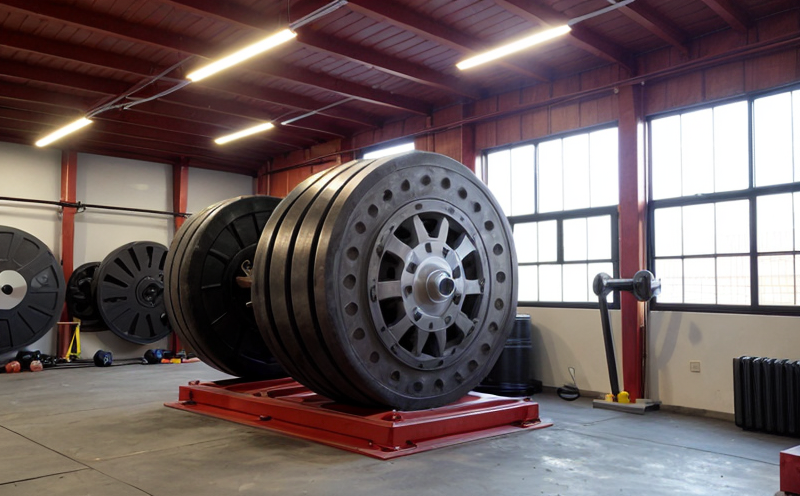Physical and mechanical standards are essential components of product design, development, and quality assurance. These standards define the minimum requirements for a products physical and mechanical characteristics, ensuring that it meets specific performance, safety, and reliability criteria. In this article, we will delve into the world of physical and mechanical standards, exploring their significance, types, and applications.
Why Physical and Mechanical Standards Matter
Physical and mechanical standards play a crucial role in various industries, including manufacturing, aerospace, automotive, construction, and healthcare. These standards help ensure that products meet specific requirements, which are essential for:
Ensuring product performance and reliability
Preventing injuries and fatalities due to product-related accidents
Maintaining consistency and quality across production runs
Meeting regulatory compliance requirements
Enhancing customer satisfaction through precise product specifications
Types of Physical and Mechanical Standards
Physical and mechanical standards can be categorized into several types, including:
Dimensional standards: Define the size and shape of a product or component, ensuring that it fits within specific tolerances.
Material standards: Specify the properties and characteristics of materials used in product manufacture, such as strength, toughness, and corrosion resistance.
Mechanical property standards: Define the mechanical behavior of a material or product under various loads and stresses, including tensile strength, compressive strength, and impact resistance.
Surface finish standards: Specify the surface quality and roughness of a product or component, ensuring that it meets specific requirements for smoothness and accuracy.
Detailed Explanations of Physical and Mechanical Standards
Bullet Points Explaining Dimensional Standards
Here are some key points to understand about dimensional standards:
Tolerancing: Dimensional standards define the acceptable limits within which a products dimensions must fall. Tolerancing involves specifying the maximum allowable variation from the nominal dimension.
Nominal dimension: This is the standard or reference value for a dimension, often specified in millimeters or inches.
Upper and lower tolerance limits: These specify the maximum and minimum values that are acceptable within a given tolerance zone.
Dimensional inspection methods: Techniques used to verify that product dimensions meet the required standards include calipers, micrometers, and coordinate measuring machines (CMMs).
Geometric dimensioning and tolerancing (GDT): This is a system for specifying geometric tolerances on engineering drawings, ensuring that products meet precise dimensional requirements.
Bullet Points Explaining Material Standards
Here are some key points to understand about material standards:
Material classification: Materials are often classified based on their composition, such as metals, polymers, ceramics, or composites.
Mechanical properties: Material standards specify the mechanical behavior of a material under various loads and stresses, including strength, toughness, and hardness.
Chemical composition: Standards may also define the chemical composition of materials, ensuring that they meet specific requirements for purity and contamination levels.
Test methods: Standardized test methods are used to verify that materials meet the required mechanical properties, such as tensile testing, compression testing, or impact testing.
Material certification: Products made from certified materials can be labeled with a material certificate or report, indicating compliance with specific standards.
QA Section
This QA section provides additional information and clarifies common questions about physical and mechanical standards:
1.
What is the primary purpose of physical and mechanical standards?
The primary purpose of physical and mechanical standards is to ensure that products meet specific requirements for performance, safety, and reliability.
2.
Why are physical and mechanical standards important in manufacturing?
Physical and mechanical standards are essential in manufacturing as they help maintain consistency and quality across production runs, ensuring that products meet customer expectations.
3.
How do dimensional standards differ from material standards?
Dimensional standards define the size and shape of a product or component, while material standards specify the properties and characteristics of materials used in product manufacture.
4.
What is GDT (Geometric Dimensioning and Tolerancing)?
GDT is a system for specifying geometric tolerances on engineering drawings, ensuring that products meet precise dimensional requirements.
5.
How are material properties measured?
Material properties are typically measured using standardized test methods, such as tensile testing, compression testing, or impact testing.
6.
What is the significance of tolerance limits in physical and mechanical standards?
Tolerance limits specify the acceptable variation from the nominal dimension, ensuring that products meet specific requirements for size and shape.
7.
Can I use a material without knowing its properties?
No, its essential to understand the properties and characteristics of materials used in product manufacture to ensure that they meet specific requirements for performance, safety, and reliability.
8.
How do I determine which physical and mechanical standards apply to my product?
Determine the relevant standards by consulting industry associations, regulatory agencies, or product manuals, as well as conducting research on standard requirements applicable to your products industry and application.
9.
What is the difference between a material certification and a material report?
A material certificate provides verification of a products material composition, while a material report may provide additional information about the products mechanical properties.
10.
Why are physical and mechanical standards important in ensuring product safety?
Physical and mechanical standards help prevent injuries and fatalities due to product-related accidents by ensuring that products meet specific requirements for performance, safety, and reliability.
In conclusion, physical and mechanical standards are essential components of product design, development, and quality assurance. Understanding these standards is crucial for manufacturers, designers, and engineers to ensure that products meet specific requirements for performance, safety, and reliability.

































